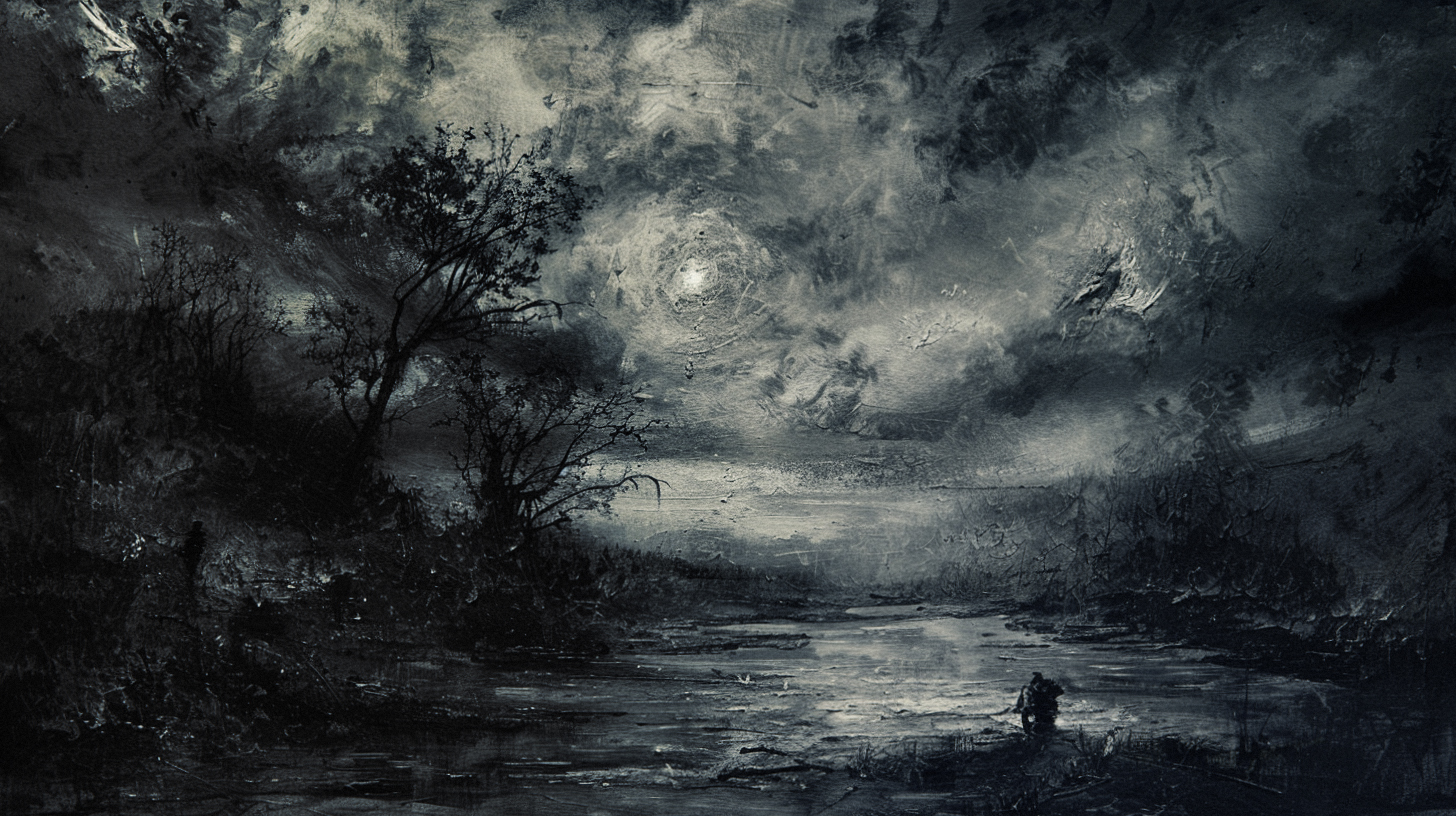
Shadows Within: Exploring the Depths of the Shadow Self
In the dim recesses of the human psyche, there lurks a mysterious companion: the shadow self. Carl Jung, a Swiss psychiatrist, provided us with a map to navigate this inner darkness. The shadow is a curious blend of our personal unconscious and the vast expanse of the collective unconscious.
Understanding ourselves requires delving into the psyche’s murky waters—to meet both the positive potentials and the darker aspects of the shadow. Ancient myths and modern dreams echo with the Shadow’s voice, nudging us to grow and integrate its lessons into our conscious lives.
Jung’s enduring concepts have equipped us with tools for this profound introspection, known as shadow work. This article shines a light on these tools, guiding us through the process of uncovering and embracing our whole selves, shadow and all.
Carl Jung: The Pioneer of Shadow Work
Carl Jung revolutionized our understanding of the human mind with his concept of the shadow archetype. Jung perceived the shadow as the concealed, dark side of the conscious personality—a repository of negative characteristics rejected by the conscious self. He recognized its emergence in dreams and fantasies, often personified as a same-sex figure with attributes opposing the ego.
When ignored in conscious life, the shadow grows more obscure and obstructive, challenging one’s well-meant resolves. Significantly, Jung posited that genuine individual development hinges on facing and integrating this shadow. This journey of acknowledging the shadow was not only psychological but also spiritual, linking profound self-exploration to broader human experience.
In his pursuit of understanding the collective unconscious, Jung introduced other archetypes like the persona, anima, and animus, which together form an intricate map of our unconscious elements. For Jung, embracing the shadow was a powerful tool for achieving a sense of wholeness, as it brings the darkness conscious, uniting it with the light of consciousness. Thus, shadow work is vital in moving towards personal authenticity and disrupting the status quo of one’s psyche.
The Conscious Mind and the Collective Unconscious
Carl Jung’s exploration into the reaches of the human mind unveiled the existence of a shared psychological space he termed the collective unconscious. Unlike the conscious mind, which is formed by immediate experiences and thoughtful deliberation, the collective unconscious carries the entire spiritual heritage of mankind’s evolution. This reservoir of ancestral knowledge and experience is believed to be intrinsically linked to the brain structure of every individual, transcending personal memories to encompass a deeper domain of human cognition.
According to Jung, the collective unconscious is the psychological inheritance that each new generation carries forth, containing archetypes that are elemental to our very being. These archetypal symbols are not acquired or learned; rather, they are inherent patterns of thought hardwired into our minds. They shape our instincts, desires, fears, and motivations, invisibly influencing thoughts, feelings, and behaviors across cultures and epochs, thus defining the universal human experience.
In contrast, the personal unconscious harbors each individual’s unique repressed emotions and memories. While the personal unconscious pertains solely to an individual, the collective unconscious is a shared attribute among all people, a facet of our psyche linking us with the echoes of ancestral wisdom. Together, the conscious mind, the personal unconscious, and the collective unconscious form the complex structural components of Jung’s model of the psyche.
Let’s delve further into practical applications of these theories through:
Understanding the Human Experience through Jungian Psychology
Carl Jung sought to unlock the mysteries of the human psyche with his innovative theory of archetypes, fundamental blueprints residing within the collective unconscious. These archetypal symbols, universal and inherited, profoundly impact our interior lives as well as our outward behavior, offering insight into the human condition. Core among these are the shadow, anima, animus, and self, each playing a pivotal role in our psychological development.
The shadow comprises the darker, lesser-known facets of our personality, often emerging from the amalgamation of personal rejections and the deeper, collective layers of the unconscious untouched by personal experience. Jung’s enhancement of Freud’s personal unconscious with this collective aspect suggested a psychological inheritance at play, one guiding experiences through innate models or archetypes. Through this lens, we can perceive that archetypes are foundational not only to religious and philosophical ideas but also to the principles of science and ethics.
Understanding archetypes is akin to deciphering a shared language of human experiences, tying us to common psychological ancestral roots. This deeper comprehension of the human psyche’s structure informs the journey towards individuation, where one’s conscious and unconscious elements harmoniously converge.
As we continue to explore Jung’s ideas, let’s consider:
Exploring the Positive Aspects of the Shadow
Often misunderstood as merely the repository of our dark and morally ambiguous traits, Jung’s concept of the shadow also encompasses positive aspects, frequently overlooked or undervalued. For instance, in societies that prize rationality over creativity, the shadow might hold an individual’s imaginative prowess, suppressed to adhere to societal norms. Similarly, tender qualities such as empathy and vulnerability could reside within the shadow, especially if perceived as weaknesses in a given cultural or familial context.
The presence of these positive traits within the shadow highlights why embracing the shadow can be enlightening. Identifying and integrating these suppressed attributes can be transformative. When people endeavor to excavate and accept these hidden aspects, they often uncover untapped potential and discover avenues for personal growth and self-expression that had been previously stifled by the conscious mind’s alignment with societal expectations.
The exploration of the positive aspects of the shadow shines a light on beneficial qualities that, if unearthed and harnessed, may become sources of creativity, innovation, and emotional intelligence within an individual.
And yet, there remains a darker side that we must confront:
The Dark Aspects of the Shadow: Confronting the Shadow Self
The shadow, at its most formidable, contains the darker aspects of the personality that are often rejected by the conscious self and the collective societal norms. These aspects symbolize the unacknowledged personal traits and behaviors that are considered negative or improper. Yet, confronting and integrating this shadow self is an indispensable step in the journey towards self-realization and improvement.
Encounters with the shadow can be unsettling, but they serve a purpose. They compel individuals to recognize and accept their own imperfections, and consequently, the flaws of others, with greater empathy and less distortion by self-deception. This acknowledgement paves the way for healthier relationships and enhanced self-awareness. Paradoxically, within this engagement lies the potential for significant personal development, as recognizing and owning these buried traits eliminates the need for projection—deflecting personal shortcomings onto others.
Moreover, the shadow’s concealed corners also hide personal strengths and virtues. Integrating these positive aspects back into the conscious mind can be an empowering path, as individuals reclaim and cultivate these attributes through self-analysis and therapeutic endeavors, thus enabling a fuller expression of their identity and abilities.
Tools for Shadow Work: Using Jungian Concepts to Explore the Depths of the Psyche
Shadow work is a powerful tool for personal growth, inviting us to confront and integrate these hidden aspects of our being. This significant psychological endeavor can unearth repressed positive attributes, like untapped talents and passions, propelling one towards a richer sense of fulfillment and self-expression.
Tools for effective Shadow work include:
- Self-reflection: Delve into personal experiences and thoughts to bring forth unconscious elements.
- Journaling: Write down dreams and internal dialogues to capture and process unconscious material.
- Psychotherapy: Work with a Jungian trained counselor to interpret and integrate the Shadow.
By engaging with Archetypal symbols—the universal tokens of the collective unconscious—individuals can navigate the wide range of human experiences. Integrating these symbols alongside the personal Shadow can ultimately breed a wholeness of being, shedding light on the universal patterns that shape our existence.
